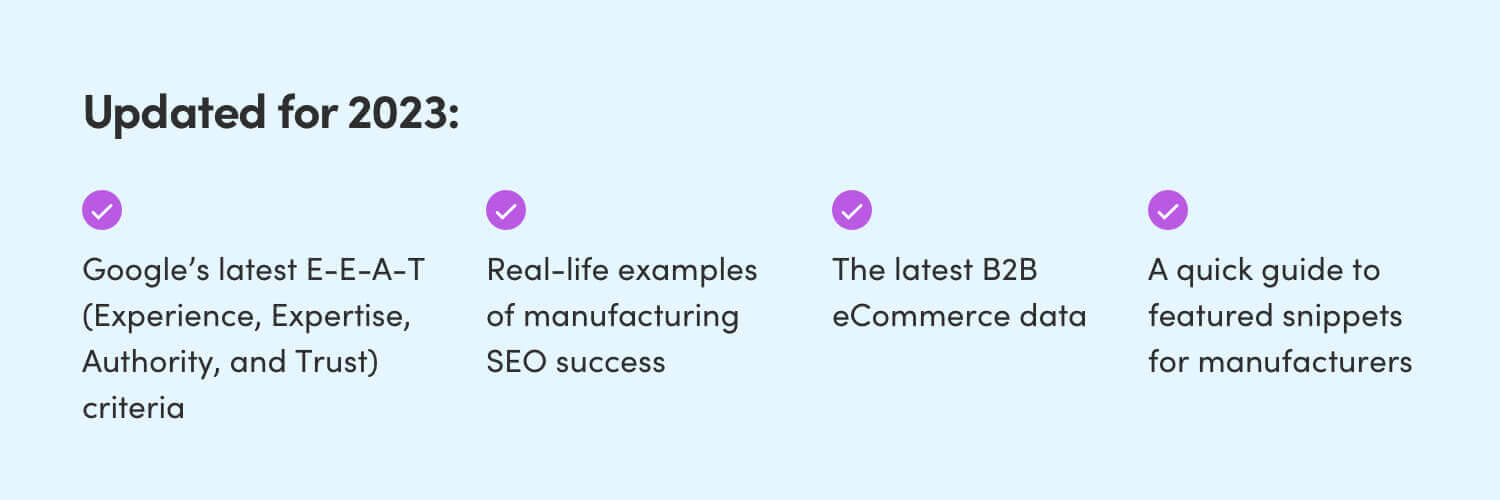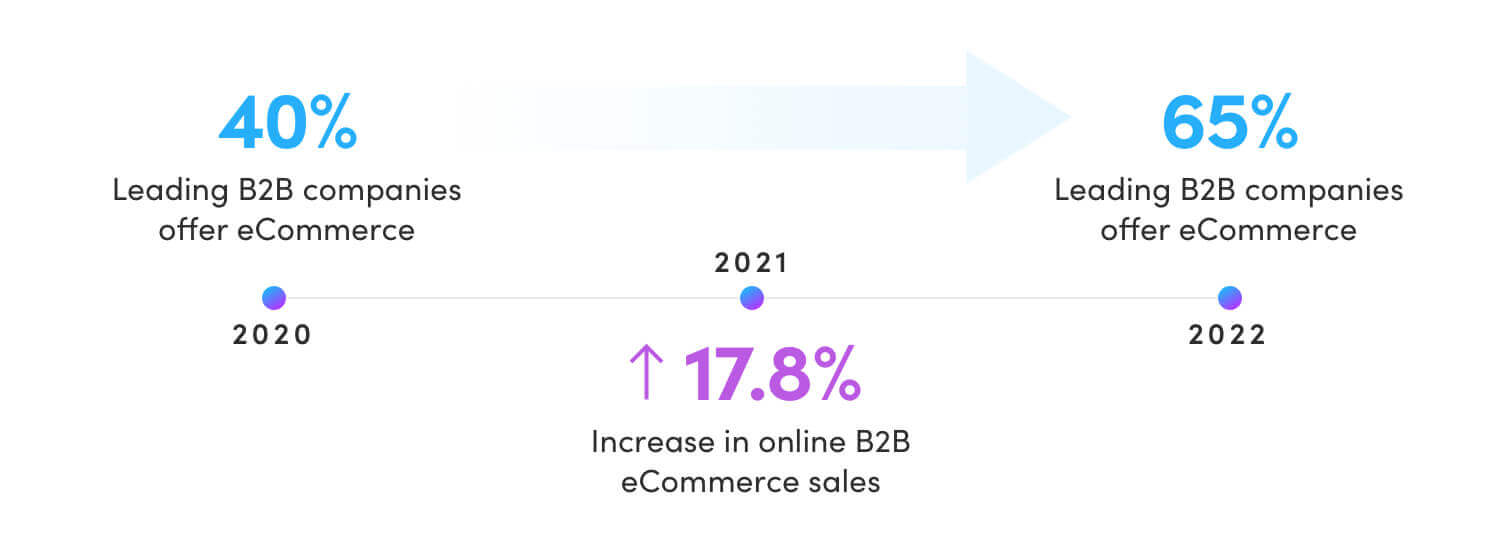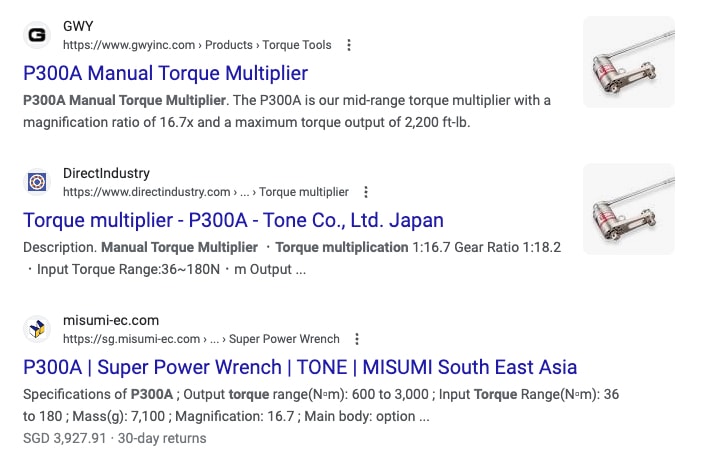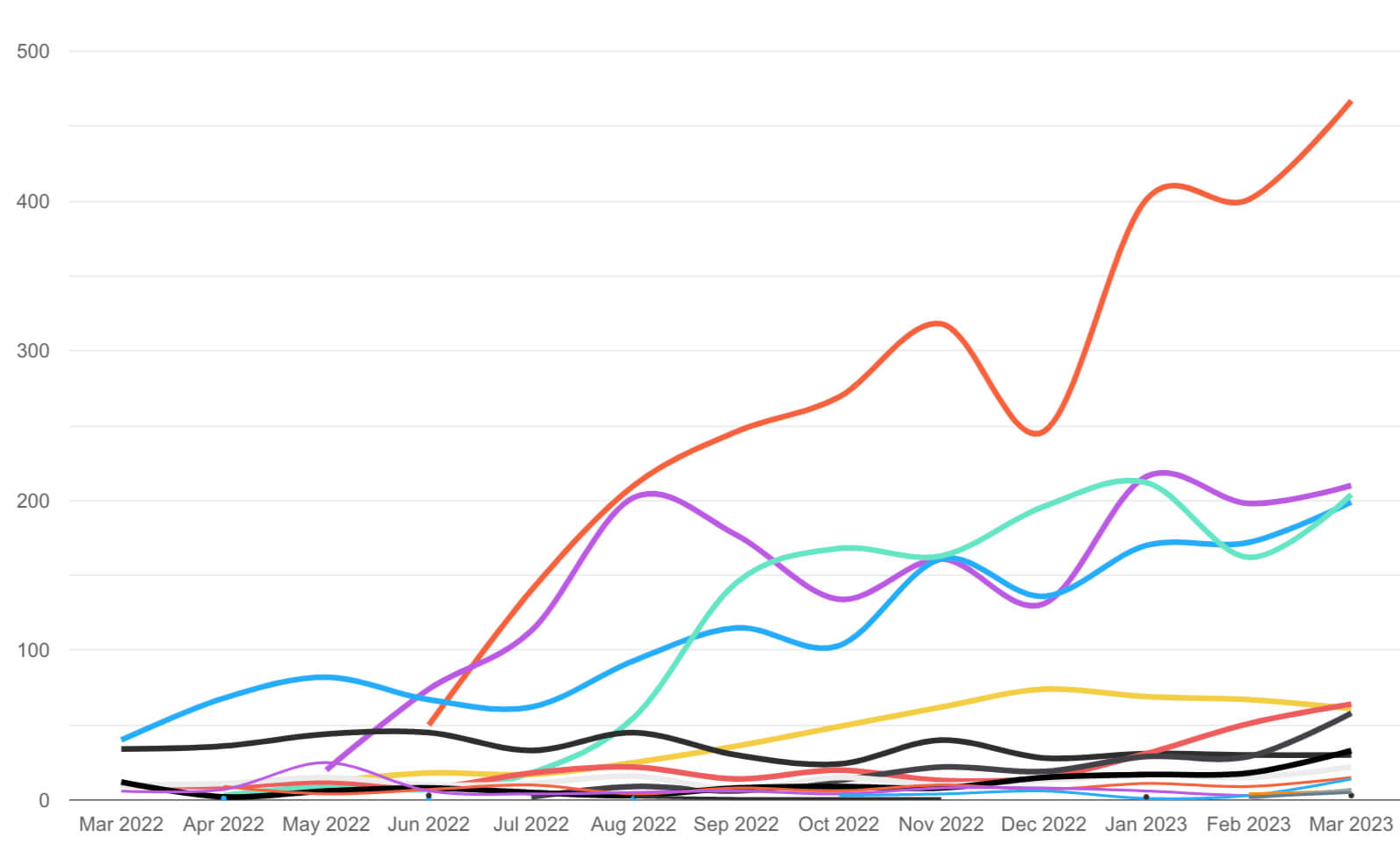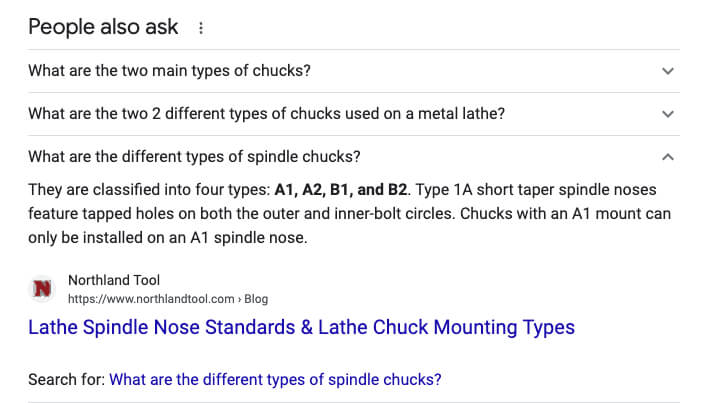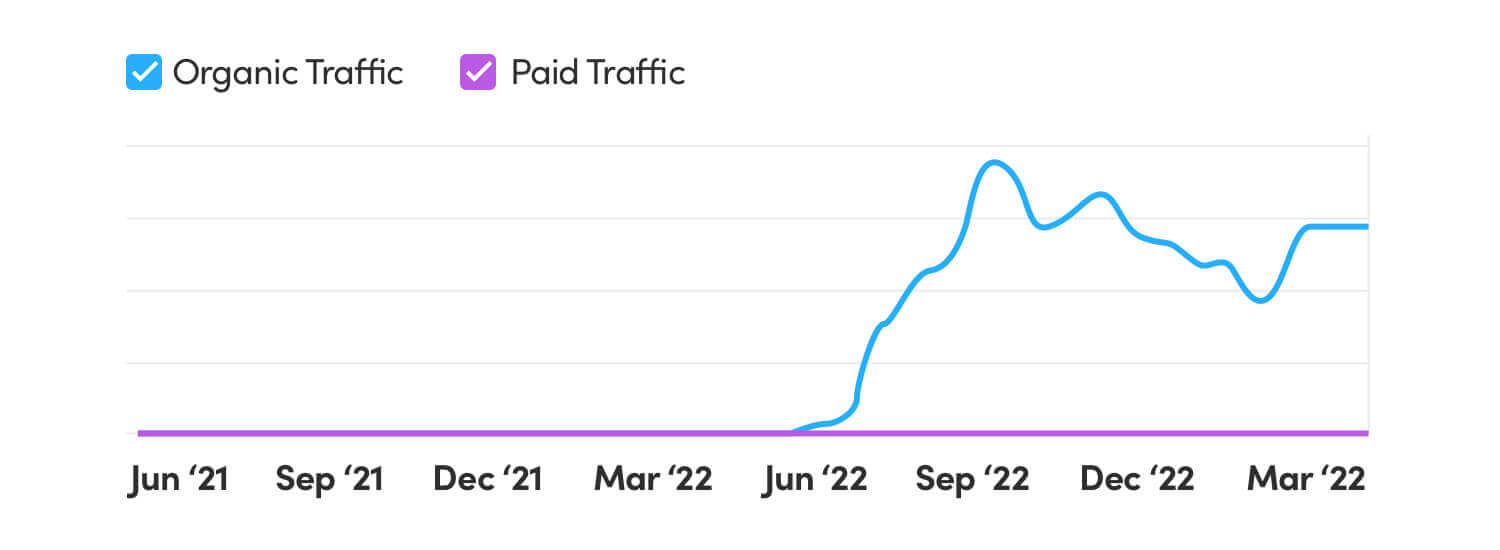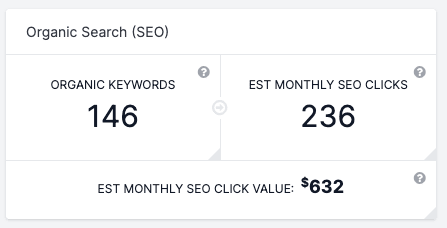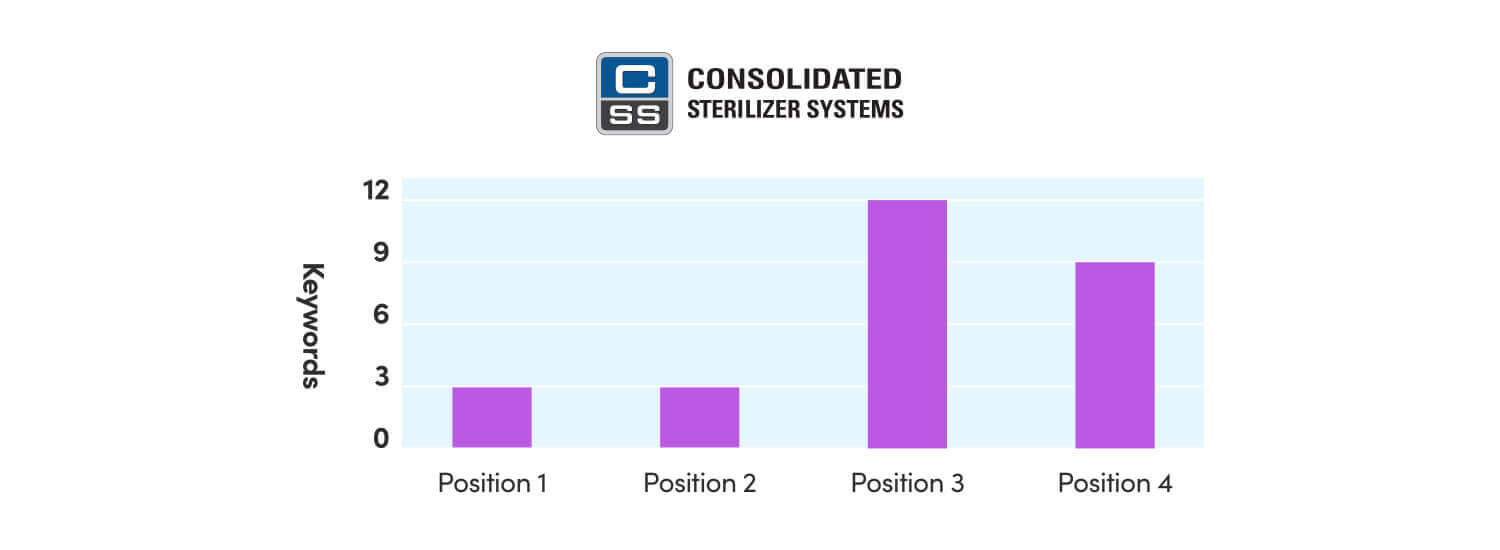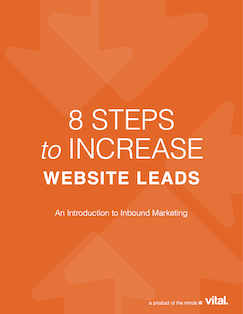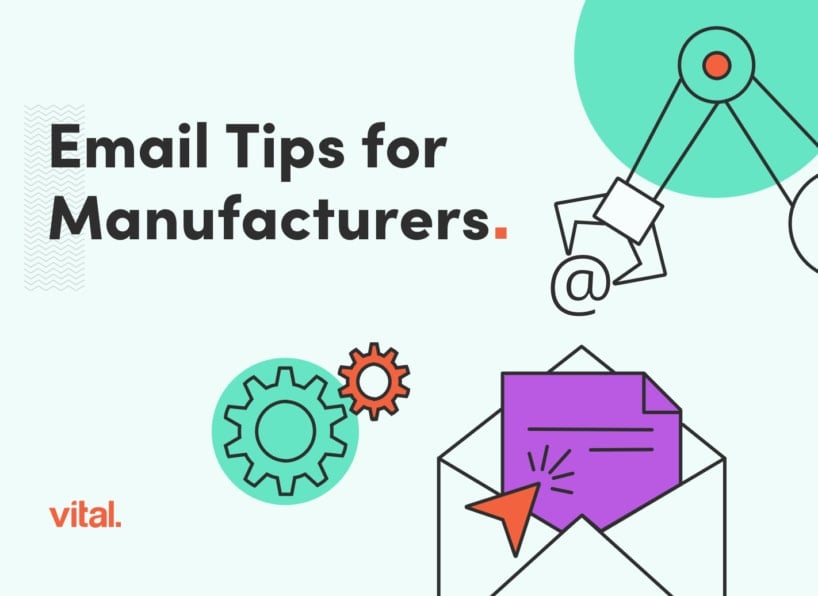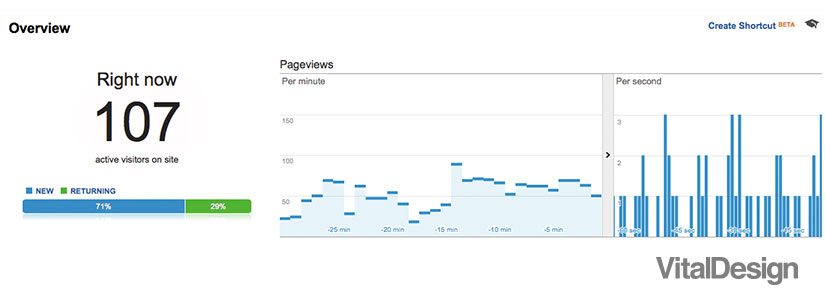An Introduction to SEO for Manufacturers
As a manufacturing company, you have unique challenges when it comes to attracting customers to your website through SEO. At Vital, we commonly work with manufacturing and industrial clients who come to us with websites that aren’t getting enough traffic through organic search. More often than not, they’re lacking a solid foundation in on-page, off-page, and/or technical SEO.
If this sounds familiar, you’ve come to the right place. This post is the definitive guide to understanding and implementing manufacturing SEO best practices to increase website traffic. We’ll cover:
- What is SEO for manufacturing?
- The importance of SEO for manufacturing companies
- 8 SEO tips for manufacturing companies
- The unique challenges of SEO for manufacturing and industrial companies
- 3 SEO in manufacturing examples
- Frequently asked questions about manufacturing SEO
Dive right in, and Google (and Bing, and Baidu, and all the rest) will be your best friend in no time.
What Is SEO for Manufacturing?
You already know that SEO stands for Search Engine Optimization, and it refers to the process of engineering your website to rank as highly as possible on the search engine results page (SERP) for keywords that are important to your target audience.
For manufacturing companies, this means following SEO best practices to rank higher for search terms potential leads and buyers are typing into search engines along every stage of the buyer’s journey, including:
- Awareness: For manufacturing SEO, you will want to create optimized content to rank terms that indicate that someone is just beginning to look for solutions your company provides. We call these “early-stage lead opportunities,” and we often use content like blog posts that focus on the problems your potential buyers are trying to solve in order to rank for “awareness phase” search terms.
- Consideration: Potential customers who are in the process of investigating and comparing different manufacturing products or services are in the “consideration” phase. To attract these searchers through SEO, things like well-designed product pages and comparison charts are important.
- Decision: These are your most highly-qualified potential customers — those who are ready to make a decision on a manufacturing vendor. They will likely already be aware of your company before they reach this stage, so for manufacturing SEO it’s important to rank for your company’s branded keywords and focus on content that will answer any questions your prospects might have before contacting sales. FAQs are a great SEO tool for this audience.
Why Is SEO Important for Manufacturing Companies?
SEO is becoming more and more important for manufacturing companies specifically. Why?
- Your audience is moving online. Manufacturing sales used to be all about face-to-face contact. Relationships are still important, but the next generation of manufacturing buyers and decision-makers are “digital natives,” meaning they grew up with the internet at their fingertips. For this audience, “Google it” is as natural as breathing.
- Search engines are getting smarter. Google and its buddies pay the bills by doing a really, really good job of giving people exactly what they’re looking for when they search online. While keeping up with changing guidelines and algorithms can be a challenge, it’s also great news for manufacturers. If you get the strategy right, you’ll attract searchers who are in the market for exactly what you have to offer.
- Today’s searchers are tomorrow’s leads and sales. SEO is a critical part of generating online leads. You can’t convert them if they can’t find you! And because quality SEO strategy leads to quality search traffic, you’ll also be getting quality marketing and sales-ready leads.
- SEO is a great brand builder. If you consistently show up on the first page of search results for keywords and terms relevant to your industry, it positions you as a leader in the market. This leads to growth and brand equity that drives value beyond just search traffic and direct leads.
8 SEO Tips for Manufacturing Companies
Understanding the benefits of SEO for manufacturing is the easy part. Actually creating and implementing a strategy that works to attract all those high-quality digital native prospects? We won’t lie. It takes some know-how and effort. No worries. We’re here to walk you through it.
1. Do your keyword research
So, you want to optimize your website for search. But searches for what? Your SEO strategy begins with research into the keywords and phrases your audience is typing into the search engines. At Vital, we take a two-step approach to keyword research.
- Make a list of terms that are relevant to your business. Specifically, think of things your customers might be searching for at different stages of the buyer’s journey.
- Use a keyword research tool like SEMrush to identify search volume and competitiveness scores for your keywords. Search volume is the average number of searches per month. The competitiveness score is a way of determining how difficult (or easy) it will be to rank for that term. Your keyword research tool will also help you identify related keywords and phrases you may not have thought of the first time around.
2. Optimize content for on-page SEO
For Google and other search engines to direct potential customers to your website, you’ll need to put in some work creating written content that is tailored to:
- Convey relevant information in an engaging way, and
- Meet the criteria of the complex algorithms that underpin the magic of online search.
This means developing and putting in place a thoughtful website content strategy that, at the most basic level, involves telling the story of what you offer and how you can help customers who are looking for what you offer.
The science behind this strategy involves understanding how people are searching for your products and services online and developing content that is engineered to get your company found by those prospective customers.
In addition to your overall and product-specific messaging, one strategy Vital uses to help connect our clients with new business is to create individual pages for different products and services, rather than just one product page or even several. This is because each detail about each product represents a unique opportunity for on-page SEO.
3. Get technical with SEO
You can optimize your content for search all you want, and your pages still won’t rank at the top of the SERP if your website is a mess — technically speaking. Technical SEO requires you to make sure your site is fast, easy to use, and secure. There are five major components that form the basis of technical SEO: Mobile optimization, internal linking, page load speed, HTTPS protocol, and XML site mapping.
Let’s break it down.
Mobile optimization
What it is: Mobile optimization refers to configuring your website so it looks great and functions seamlessly for people who are visiting you on mobile devices.
Why it’s important: Mobile optimization is essential because an ever-growing percentage of people are searching for information and conducting business on their phones and touchpads.
Best practices for mobile optimization: Use responsive design; this makes it easy to ensure that your site is optimized for mobile users. Cut out any clutter. Navigation should be simple and intuitive. Don’t try to replicate your desktop experience. (Read more about the importance of mobile optimization.)
Internal link structure
What it is: Internal linking refers to hyperlinks that direct visitors to other pages on your website.
Why it’s important: Internal linking also directs search engines to other pages on your website, helping them to index and understand your site. Used wisely, internal linking will help your site and your pages rank higher in Google searches.
Best practices for internal link structure: To help organize your website’s internal link structure, we recommend an internal hierarchy (or org chart) that has your homepage up top, hub pages below that, and other blog posts or related content (also called spoke pages) below the hub pages. Kind of like a pyramid (see examples here).
Page load speed
What it is: Page load speed refers to how long it takes to begin showing the content on your page, and how long it takes to display all of the content on a page.
Why it’s important: Page load speed affects SEO both directly and indirectly. It’s what is known as a “direct ranking factor,” meaning it’s one of the things Google’s algorithm takes into account to determine page ranking — and it’s become even more important since Google’s 2021 Page Experience Update. Indirectly, a slow-loading page causes visitors to abandon ship, or “bounce” — and an unfavorable bounce rate will severely hamper your ability to do business online.
Best practices for page load speed: Though there is a range of factors that drag down page load speed, one of the leading culprits is the presence of images that have not been optimized for size and format. We recommend using a WordPress plug-in that functions as a “secret weapon for faster page load times and higher SEO scores.”
HTTPS protocol
What it is: First there was HTTP (Hypertext Transfer Protocol), the protocol used to transfer data over the web; now there is HTTPS (Hypertext Transfer Protocol Secure), often described as HTTP plus encryption that makes communication over the web more secure.
Why it’s important: HTTPS makes it harder for hackers to steal data and easier for web visitors to trust your website. Importantly, it also helps Google recognize your website as trustworthy.
Best practices for HTTPS protocol: Employing HTTPS on your website is itself now an agreed-upon best practice. To learn more, check out our helpful “HTTPS: What It Does, Why You Need It and How to Get It” blog post.
XML site mapping
What it is: XML (aka Extensible Markup Language) is a simple format used to facilitate the sharing of information online. In layman’s terms, Harvard Business Review describes it as “a more flexible cousin of HTML (hypertext markup language),” noting that “whereas HTML tells a browser application how a document should look, XML describes what’s in the document.”
Why it’s important: Using XML to create a map of your website (this will sound familiar) helps Google easily find and navigate your site’s pages, which enhances your search rankings.
Best practices for XML site mapping: A short list of XML site mapping best practices includes using plug-ins to help do the work automatically, excluding utility (ex. log-in) and lower-quality pages from your index, and submitting your sitemap to Google.
4. Invest in your blog and other content marketing efforts
Not long ago, it was pretty unusual for manufacturers to even think about blogging or other types of content marketing — but as of 2023, that’s no longer the case. According to research by the Content Marketing Institute, 71% of manufacturing companies reported that content marketing is more important this year than last.
Blogging and other types of content marketing allow manufacturing companies to boost SEO for search terms at all stages of the funnel. A successful manufacturing content marketing strategy will combine keyword research, audience insights, and good old-fashioned creative thinking to generate topic ideas that offer something of value to prospective customers.
By engaging even early-stage prospects, manufacturers can position themselves as thought leaders — and ensure that they are top-of-mind when it’s time to pick a vendor or make a purchase.
5. Create content that follows Google’s experience, expertise, authority, and trust (E-E-A-T) guidelines
For a long time, one of the most important ways Google has determined how to rank content was something called E-A-T, or expertise, authority, and trust. As of December 15, 2022, Google added an additional E for experience. This applies specifically to search queries where people are likely to value firsthand experience — for example, product reviews, travel writing, and how-to guides.
When generating marketing content, keep E-E-A-T in mind. Manufacturers have a huge opportunity to attract prospects through content that leverages internal subject matter experts. For example, we help many of our manufacturing clients create high-quality E-E-A-T content marketing resources like maintenance and repair guides within their product categories. By ranking for search terms related to product maintenance and repair, these clients are able to attract searchers who already own relevant products — and may soon be looking to replace them.
6. Jump to the top of the SERP with featured snippets
Getting your content to rank at the top of Google’s SERP is awesome. According to an analysis of SEMrush data by backlinko, pages that rank in positions one through four get a whopping 62.4% of clicks.
But competition for those spots can be stiff, and even if you’re doing everything right, it often takes time to work your way up to the top. Marketer Neil Patel dug into a ton of search data and found that it takes an average of 3.4 months to reach position one or two — and that’s for a website with a domain authority of about 50 and an average number of 25 backlinks.
There is, however, a way to jump the line and get to what SEO nerds call “position zero”: featured snippets. Here’s a quick summary of what you need to know:
- Featured snippets are search results that appear before the top-ranking keyword result.
- Not every type of search query will return a featured snippet.
- Google determines whether a query can be answered with a featured snippet.
- Google grabs text, tables, images, and/or video from the source or sources it deems most relevant and authoritative, and throws them at the top of the SERP.
According to Search Engine Land, featured snippets get an average 8.6% click-through rate (CTR). This is significantly lower than the top keyword results, but it’s still huge for content that otherwise might not even make it on the first page of the SERP. (That backlinko report shows that less than 1% of searchers ever click on a page-two result.)
Intrigued? Find out how to get featured snippets for your manufacturing company’s website.
7. Boost your SEO through high-quality link building
Link building is a powerful way to help your website rank higher on Google’s SERP. Simply put, it involves getting links back to your website placed on other high-quality websites and pages.
One popular way to accomplish this is to create and seek placement for “guest posts.” For example, if you are in the 3-D printing industry, consider writing a helpful and informative blog post about a specific aspect or application of 3-D printing, and reach out to leading industry websites that accept third-party content for publication. This tactic helps position your company as a “thought leader” in Google’s eyes, which in turn increases your site rankings.
Additional ways to reap the benefits of link building include getting listings and descriptions of your business published in online directories, aggregator websites, and trade publications.
For tips on how to scale your link-building with less time and effort, check out this video.
8. Add eCommerce capabilities to your manufacturing website
Traditionally, B2B companies like manufacturers have been slower to adopt eCommerce than their B2C counterparts. It’s easy to see why. Manufacturing sales are rarely as simple as loading up an online shopping cart and hitting “check out.” However, things are changing. Forrester reports that, as of early 2020, only 40% of leading B2B companies offered eCommerce. By February 2022, that number changed to 65% of B2B companies who have eCommerce capabilities.
And it’s not just about what your competitors are doing. Forrester also reports that there was a 17.8% increase in online sales on B2B eCommerce sites in 2021.
eCommerce is important for your manufacturing website for more than just direct sales. It’s also an important factor in boosting SEO and driving more traffic to your website. Here’s why:
- Manufacturing customers often search for parts by SKU number, industry, material, tolerances, specifications, etc.
- With an eCommerce store, manufacturers can create separate pages to target these specific keywords.
- This increases your chances of showing up in product-specific searches.
- In addition to the on-page SEO benefits of eCommerce, a well-constructed linking structure that connects related product pages will improve your technical SEO.
Pro tip: When writing product descriptions for your manufacturing eCommerce store, make sure each one is unique. Templated descriptions are easier, but customizing the details you include in your descriptions to match keywords, searcher intent, and the product’s use case will give Google context and help you rank across a variety of categories.
For example, if you want to secure more local business, your product description should include details about why it’s important in your location. This will substantially improve your local rankings.
SEO Challenges for Manufacturers & Industrial Companies
Many manufacturing operations rely on unique technical terminology to describe products and processes. Internally, this language becomes second nature to doing business. However, potential customers may not always be fluent in industry jargon.
Therefore, as part of your all-important SEO research and strategizing, it’s important to make an extra effort to get inside the head of your prospective customers to understand the full range of words, phrases, and terms they might use to search for your products. It is also beneficial to focus on “searcher intent” to gain insight into what people have in mind when they are searching specific terms related to your industry or product offerings.
Additional SEO challenges for manufacturers include the fact that longer sales cycles are typical in B2B manufacturing (as opposed to the instant gratification of B2C sales), requiring ongoing SEO strategies for engaging new leads and nurturing them throughout the sales funnel.
3 SEO in Manufacturing Examples
Now that you know the details of SEO for manufacturing, let’s see it in action:
1. Industrial Services Provider GWY
Want proof that Google loves a well-constructed eCommerce product page? Vital used this strategy for industrial services provider GWY, and they consistently rank high on the SERP for product-specific searches. Here’s an example:
Search query: P300A Manual Torque Multiplier
SERP position: One
2. Northland Tool & Electronics
Spindle repair and rebuilding specialist Northland Tool & Electronics has been working with Vital for about two years. Using our comprehensive, disciplined approach to SEO for manufacturers, we’ve been able to help them improve their search rankings and drive qualified traffic to their webpage.
Here’s a snapshot of search volume growth for their top-performing blog posts over the past 12 months:
Let’s take a closer look at Northland’s best-performing blog post, Lathe Spindle Nose Standards & Lathe Chuck Mounting Types. (Say that ten times fast.) This post ranks in the top four positions on the SERP for five search queries, and appears as a Google “people also ask” result for two additional keywords.
Search query: Types of lathe chuck
People also ask result: What are the different types of spindle chucks?
As a result of all this juicy action on the SERP, here’s the growth in organic traffic for this post:
3. Consolidated Sterilizer Systems
In 2023, Vital celebrated 20 years of partnership with autoclave and sterilizer manufacturer Consolidated Sterlizer Systems. (That’s like a century in digital marketing years.) Together, we’ve had too many big SEO wins to count. Here’s a recent one:
Consolidated Sterilizer Systems published a blog post, Sterilizing Medical Equipment, supporting the company’s move into the healthcare space. Here’s a snapshot of the post’s organic search rankings:
This post is performing magnificently on the first page of the SERP:
And, it’s got three featured snippets. Here’s one:
Search query: Sterilizing Medical Equipment
FAQs about SEO for manufacturers
Got questions? We’ve got answers.
Q: How can I tell if my manufacturing SEO strategy is working?
A: Measure it! Monitor your web traffic analytics to see if your site traffic is increasing, especially on pages you’ve optimized for search. It is important to emphasize that it takes time (often months) for these efforts to mature and bear fruit; patience is an essential part of building your long-term, lead-generating SEO strategy.
Q: Does my manufacturing website need a blog?
A: Yes. Having a blog that publishes helpful, informative posts is important for several reasons. Your posts will be strategically engineered to draw interested visitors to your site, to engage them when they arrive, to help establish or expand your organization’s profile as a thought leader in your industry, and also to serve as “related content” offers when nurturing leads.
Q: I did everything you said and my website is getting a ton of search traffic, but my conversions and leads are low. What gives?
A: This where SEO connects with CRO (conversion rate optimization). There is so much to say about this topic that we have crafted an in-depth blog post that takes a deep dive into the business of generating leads and then maximizing your conversion rate to turn those leads into customers. Read about B2B Online Lead Generation Strategies here.
Q: It seems like Google’s “rules” for SEO are always changing. How do I stay on top of things?
A: You’re right. Google’s behind-the-scenes SEO machinations are notoriously mysterious and enigmatic. For best results, you’ll want someone with real-world SEO experience on your team.
Q: Do I need to hire a manufacturing SEO agency?
A: Not necessarily, but our experience has shown that you will need a team that’s skilled at SEO strategy and content creation, as well as web development and graphic design. That’s why many manufacturers opt to hire an experienced agency to help them grow revenue through SEO and related strategies.
Here’s the part where we toot our own horn.
At Vital, every website we build is designed to serve as the foundation for digital marketing that drives leads and sales, and SEO is a crucial part of that. Intrigued? Check out some of Vital’s manufacturing website work here.
Ready to talk about how a comprehensive SEO strategy can help your manufacturing company’s website get more visitors, more leads, and ultimately generate more revenue? Contact us.

